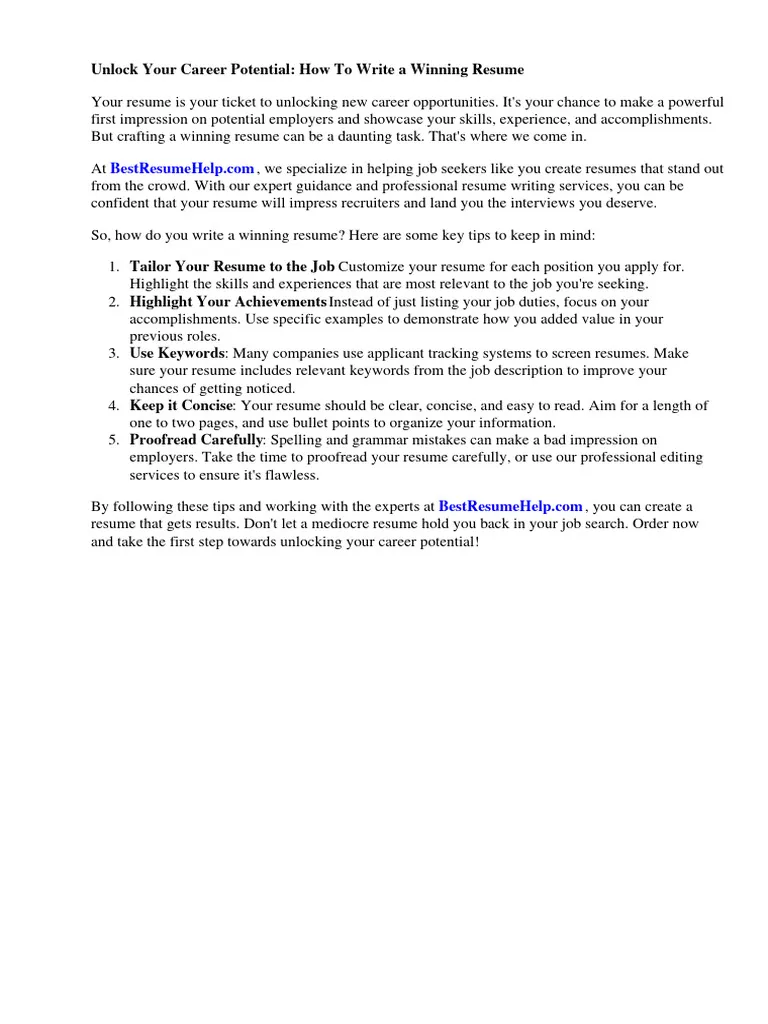Understand the Purpose of an Internal Cover Letter
An internal cover letter is a powerful tool for employees seeking new opportunities within their current company. Unlike a standard cover letter for external applications, an internal cover letter leverages your existing company knowledge and relationships to highlight your suitability for a role. The primary goal is to convince the hiring manager that you’re the best candidate, even when competing against external applicants. This letter should showcase your understanding of the company culture, your proven track record, and your eagerness to contribute further. It’s a chance to demonstrate your commitment to the company and your desire to grow professionally within its framework. A well-crafted internal cover letter can significantly increase your chances of landing an interview and ultimately securing the desired position.
Highlight Your Achievements
One of the most critical aspects of an internal cover letter is highlighting your achievements within the company. Instead of simply listing your job duties, focus on specific accomplishments that demonstrate your value. This means quantifying your contributions whenever possible. Use data, metrics, and examples to illustrate your impact. For instance, instead of saying “Managed social media accounts”, state “Increased social media engagement by 30% in six months, leading to a 15% rise in lead generation.” The more concrete your examples, the stronger your case. Show the hiring manager what you’ve done, the results you’ve achieved, and how those achievements align with the requirements of the new role.
Quantify Your Accomplishments
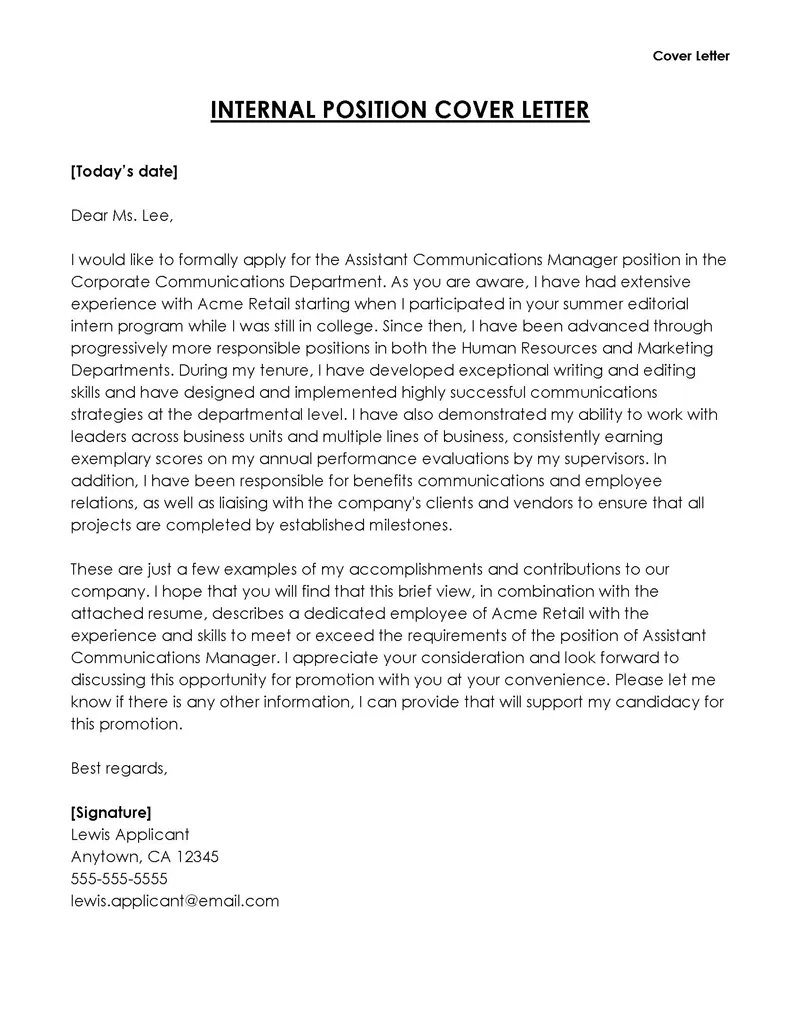
Quantifying your accomplishments goes hand-in-hand with highlighting them. Numbers and data are your best friends when writing an internal cover letter. They provide tangible evidence of your effectiveness and make your claims more credible. When describing your achievements, use percentages, dollar amounts, and specific metrics to showcase your impact. For example, “Reduced customer service response time by 20%” or “Generated $100,000 in new revenue through strategic marketing initiatives.” These quantifiable results leave a lasting impression and demonstrate your ability to deliver results. Make sure the metrics are relevant to the role you are applying for, aligning your past achievements with the expectations of the new position.
Showcase Your Skills and Experience
In addition to your achievements, clearly articulate your skills and experience, focusing on those that align with the new role. Tailor your descriptions to match the job description’s requirements. Identify the key skills and qualifications the hiring manager is seeking and provide specific examples of how you’ve demonstrated those skills in your current or previous roles. This is where you make a direct connection between your qualifications and the needs of the new position. By doing so, you demonstrate that you possess the necessary abilities to succeed, making it easy for the hiring manager to envision you thriving in the role. Avoid generalities; be specific, and use examples to support your claims.
Match Skills to Job Requirements
Carefully review the job description and identify the essential skills and qualifications the hiring manager is looking for. Then, structure your letter to directly address these requirements. For each skill or qualification, provide a specific example of how you’ve used it successfully in the past. This could involve describing a project you led, a problem you solved, or a situation where you demonstrated a particular skill. The more you can demonstrate that your skills directly align with the job requirements, the stronger your application will be. This demonstrates your understanding of the role and your preparedness to take on its challenges.
Demonstrate Company Knowledge
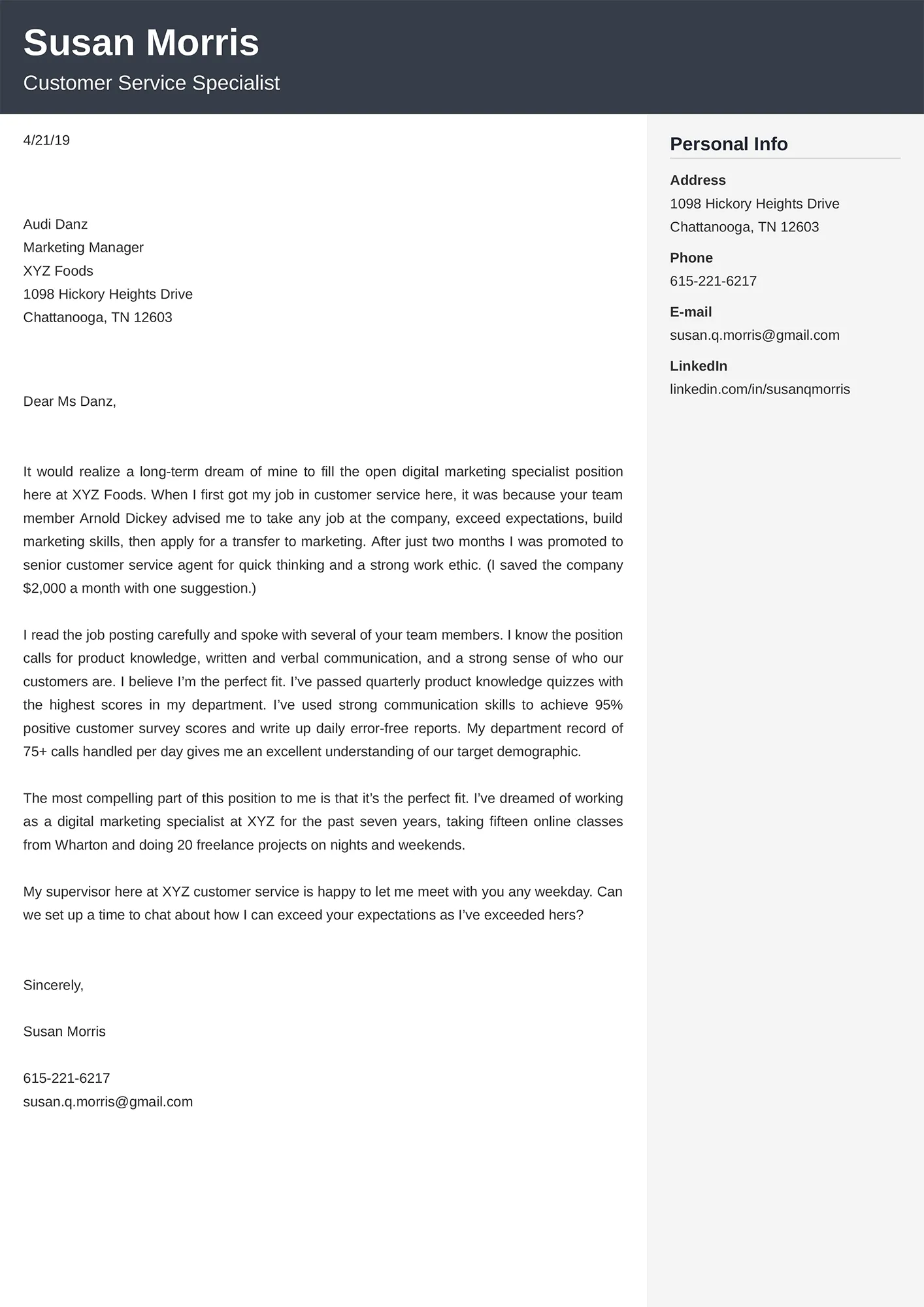
Internal candidates have a distinct advantage because of their existing knowledge of the company. Use this to your benefit. In your cover letter, demonstrate your understanding of the company’s mission, values, and strategic goals. Show how your skills and experience align with these broader objectives. Mention any company initiatives you’ve been involved in, any cross-departmental collaborations you’ve participated in, or any insights you’ve gained about the company’s operations. This knowledge not only shows your commitment to the company but also demonstrates your ability to contribute meaningfully to its success. It proves you are invested in the company’s future and understand its direction.
Address the Hiring Manager Directly
Personalizing your cover letter is crucial, especially when applying internally. Whenever possible, address the hiring manager by name. If you don’t know the hiring manager, it’s acceptable to use a more general greeting like “Dear Hiring Manager.” Researching the hiring manager can give you valuable insights, helping you tailor your letter. Addressing the hiring manager directly immediately shows you are invested in the application. It makes your letter feel more personal and shows that you’ve put in the effort to learn about the person who will be reading your application.
Research the Hiring Manager
Before you start writing, research the hiring manager. Look them up on LinkedIn or other professional networking sites. Understanding their background, their role within the company, and their areas of expertise can help you tailor your cover letter. For instance, if you know they’re passionate about a particular initiative, you can mention your related experiences and how you would contribute to that initiative. This level of personalization demonstrates initiative and attention to detail, which can make your application stand out. Tailoring your letter to the specific person reading it shows that you care about the opportunity and are not just submitting a generic application.
Personalize Your Letter
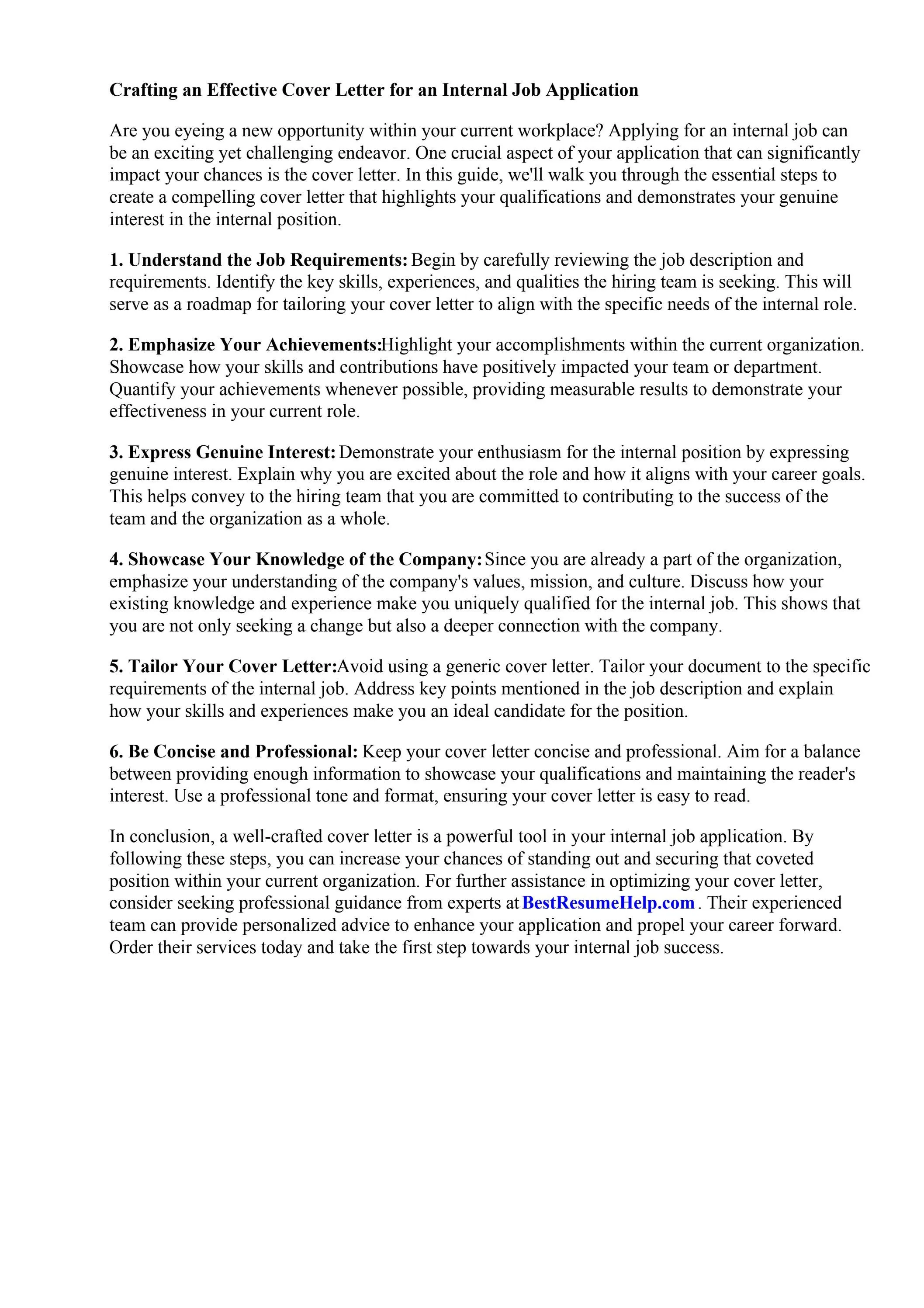
Personalization goes beyond addressing the hiring manager by name. It involves demonstrating your understanding of their needs and demonstrating how you can contribute to the team. Reference specific projects you’ve admired, company initiatives you’re interested in, or challenges you’re eager to solve. Show genuine enthusiasm for the role and the company’s future. The more you can demonstrate a personal connection to the opportunity, the more likely you are to make a positive impression. Highlight why you are particularly interested in this role and how your specific skills and experience make you the ideal candidate.
Structure Your Internal Cover Letter
A well-structured cover letter is easy to read and allows the hiring manager to quickly grasp your qualifications and interest. The structure should be clear and professional. Start with a strong header and salutation, move into body paragraphs that highlight your achievements and skills, and close with a call to action. Each section should have a clear purpose and contribute to the overall message of your letter. A clear structure helps convey your thoughts and makes your letter more persuasive, making it easier for the reader to understand your key qualifications and your enthusiasm for the role.
Header and Salutation
Begin with a professional header, including your contact information. Then, address the hiring manager by name, if possible. A personalized greeting is more inviting than a generic one. Maintain a formal tone throughout the header and salutation, ensuring it sets a professional tone for the rest of the letter. If you don’t know the hiring manager’s name, use a professional alternative, such as “Dear Hiring Manager.” The header ensures that your contact information is easily accessible. The salutation sets a respectful tone, demonstrating professionalism and attention to detail.
Body Paragraphs
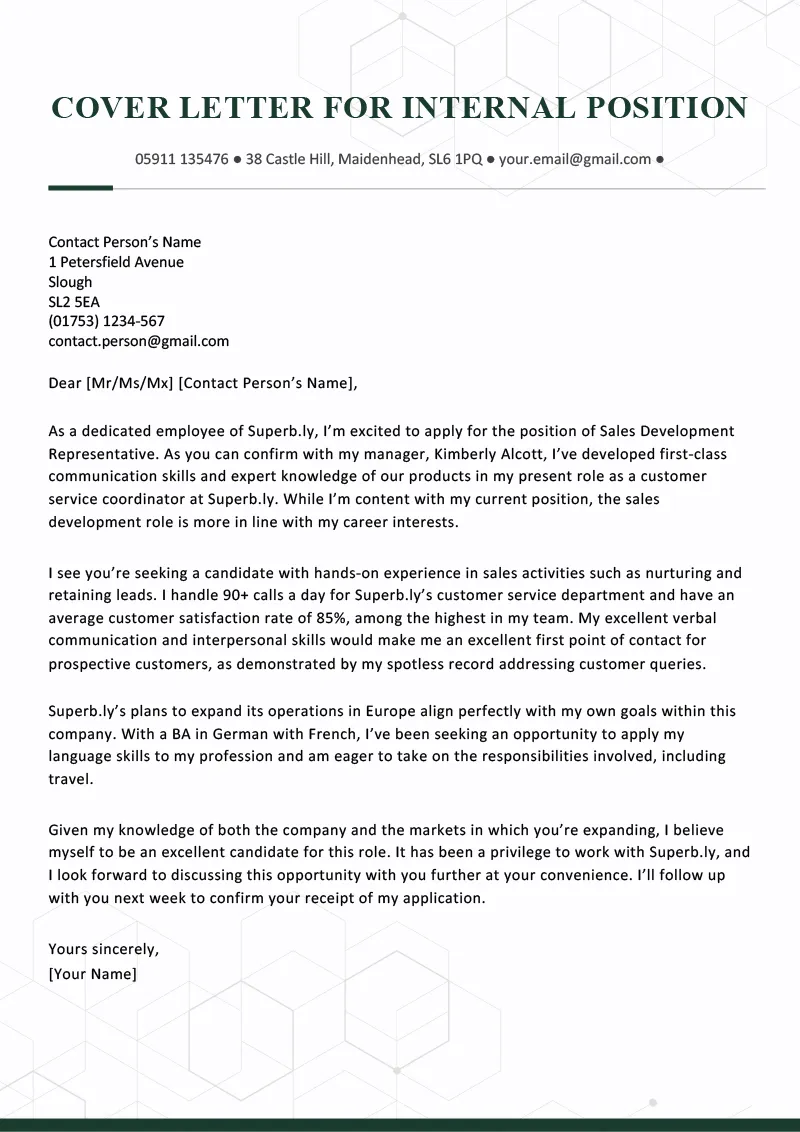
The body paragraphs are the meat of your cover letter. Use these paragraphs to highlight your achievements, showcase your skills, and demonstrate your understanding of the company and the role. Each paragraph should focus on a specific point, and support it with concrete examples and data. Structure the body paragraphs logically, building a narrative that connects your past experiences to the requirements of the new position. Aim for clarity and conciseness, avoiding jargon or overly complex language. Break up long blocks of text with short paragraphs to improve readability, and clearly separate each idea to make it easier for the hiring manager to follow your thoughts.
Closing and Call to Action
In your closing paragraph, reiterate your interest in the role and thank the hiring manager for their time and consideration. End with a clear call to action, such as stating your availability for an interview or expressing your eagerness to discuss your qualifications further. A strong call to action encourages the hiring manager to take the next step. Make sure to proofread your closing carefully to avoid any errors. Keep the tone professional and enthusiastic, reinforcing your commitment to the opportunity and your value to the company.
Proofread and Edit Your Letter
Before submitting your cover letter, thoroughly proofread and edit it. A well-written cover letter demonstrates professionalism and attention to detail. Errors in grammar, spelling, or punctuation can undermine your credibility. This is your opportunity to make a great first impression, and the quality of your writing is a direct reflection of your abilities. Proofreading ensures that your message is clear, concise, and free from distracting errors that might detract from your qualifications. A polished and error-free cover letter sends a clear message that you are a detail-oriented and competent professional.
Check for Grammar and Spelling Errors
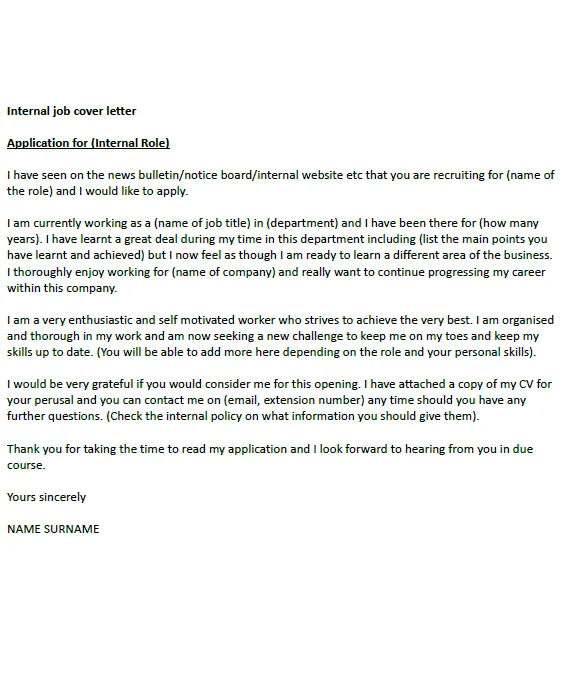
Carefully check your cover letter for any grammatical errors or spelling mistakes. Read your letter aloud to catch any awkward phrasing or typos. Use a grammar checker or spell-checker as an additional check, but always review the suggestions carefully. Don’t rely solely on these tools; human proofreading is essential. Misspellings and grammatical errors can negatively impact the perception of your professionalism and attention to detail, so taking the time to proofread is a crucial step. Ensure that all your sentences are complete and correct.
Get Feedback From Others
Ask a trusted colleague, mentor, or friend to review your cover letter before you submit it. A fresh pair of eyes can catch errors you may have missed, and offer valuable feedback on clarity and effectiveness. Request specific feedback on the letter’s clarity, conciseness, and overall impact. Ask them whether your achievements are clearly demonstrated and if the letter effectively showcases your skills. An outside perspective can help you fine-tune your letter and ensure it’s as compelling as possible. Having someone else review your letter is a great way to identify areas that need improvement before submitting your application.
Writing an internal cover letter requires careful planning and execution. By understanding the purpose of the letter, highlighting your achievements, showcasing your skills, addressing the hiring manager directly, structuring your letter effectively, and proofreading diligently, you can significantly increase your chances of landing the desired role. Remember to tailor your letter to the specific opportunity, and always demonstrate your enthusiasm for the company and the new position. A well-crafted internal cover letter is your key to unlocking new career opportunities and advancing within your organization.
